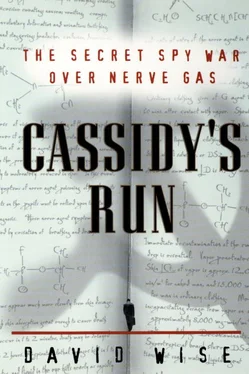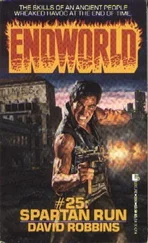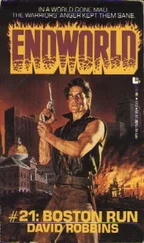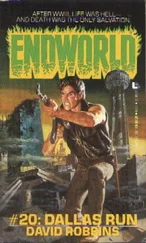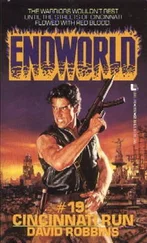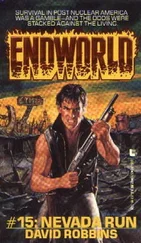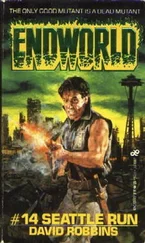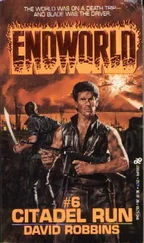In early September, Mikhail Danilin left Washington for the last time. Cassidy was told in the June letter that his next personal meeting, with a new “Mike,” was to take place in December in New York City where Russian intelligence officers worked under diplomatic cover at the Soviet mission to the United Nations and in the UN secretariat. “Return in your package both special cameras unless you have a new job with an access to classified documents,” the instructions continued. “Your messages to me are okay but in the future try to leave larger margins on both sides on the top and at the bottom of the sheets you are writing on…. Do not forget to steam my letter before developing.”
Finally, the letter asked Cassidy to brush up on his cryptography. It included sixteen six-digit groups containing a coded test message. “To refresh your skill in reading my coded messages try to work out this one,” the letter said.
A few days before Christmas, Cassidy drove north from Florida to keep the rendezvous with the Russians. “I had to drive,” he recalled. “If I flew, it would look funny going through security with a hollow rock full of film.” [1] At the time, Americans were just becoming accustomed to security precautions at domestic airports. Six months earlier, on December 15, 1972, the FAA had imposed the rule that all passengers and carry-on baggage be screened by metal detectors and X-ray machines or searched by hand.
The fake rock, it had also occurred to him, might look to security like a good place to hide drugs. Aside from Cassidy’s concerns about airport security, he was going to need a car in New York to go to all the drop, signal, and meeting sites specified by the Russians. In the end, however, O’Flaherty decided to transport the rock north.
In New York, Cassidy checked into a motel in Howard Beach, Queens, which, to the vast embarrassment of both Cassidy and the bureau, turned out to be a hot-sheet motel, whose patrons used it for quickie sex. Next day, WALLFLOWER moved to the Hilton near John F. Kennedy International Airport.
Meanwhile, O’Flaherty flew to New York from Tampa, carrying a gym bag with the hollow rock, which contained the two small cameras and films of secret documents that Cassidy had photographed before he retired. O’Flaherty, with his FBI credentials, would have no trouble going through security. But no one at the airport bothered to ask why he was traveling with a rock in his carry-on bag. In New York, fortunately, O’Flaherty had not been booked at the seedy motel; he stayed with his mother in Rockaway Point, Queens, in the house where he had grown up.
Cassidy’s instructions from the Russians, were, as always, detailed and meticulous. “Come to New York City on December 22, 1973 (Saturday),” he was told. “At 2 P.M. leave your stuff at the following place: From 104th Street in Queens walk west along 165 Avenue to its dead-end. Put your package behind the right side of the concrete wall with railings preventing cars from going further.” If for some reason the dead drop was not suitable, he was given a “reserve place” in Brooklyn.
The meeting place with the new “Mike” was to be an antique shop in Brooklyn. “At 4 P.M. come to the entrance to ‘Bea’s As Is’ at 3004 Avenue J. Stay there for 3–5 minutes then walk slowly along right side of Avenue J, turn right to New York Avenue, turn right to Avenue K, towards Nostrand Avenue. Have a book size package in yellow wrapping in your hand and a smoking pipe in your mouth.”
The instructions then supplied the seemingly odd parol that was to be used for identification. “If someone approaches you and asks: ‘Could you tell me where is the nearest drive-in theatre?’ You should answer: ‘Beltsville Drive-in is the nearest I know but the best one is Rockville Drive-in Theatre.’” [2] On the face of it, the parol seemed fairly wacky, since both Maryland cities were more than two hundred miles away. Perhaps Danilin, being unfamiliar with the geography of New York, simply stuck to locations he knew. On the other hand, in the unlikely event that the Soviet spy went up to the wrong person—not too many people would be walking around Brooklyn with a pipe and a yellow package—whoever was approached would certainly not recommend a movie theater in Rockville. Conversely, in the one-in-a-million chance that a real stranger came up to Cassidy and asked directions to a drive-in theater, his reply would be so baffling that there certainly would be no danger of Cassidy mistaking the person for his Soviet contact.
If no one approached Cassidy, he was told to “repeat the whole thing on the next day.”
After the personal meeting with the new “Mike,” Cassidy was instructed to go to a dead drop in Brooklyn to pick up his rock: “My package will be between the pole and metal fence going along 36 Street.”
The GRU was not making matters easy for Cassidy in the Big Apple. To signal that the pickup had taken place successfully, he was to drive all the way to the Yorkville section of Manhattan and place “a horizontal line with a red marker on the lamp pole located at the south-eastern corner of the intersection of the First Avenue and 90 Street (near Mobil Gas Station) in Manhattan, NYC.” But not just anywhere on the pole. “It should be put on the side of the lamp pole facing First Avenue and as high as approximately 3–4 feet from the ground.” The Soviets undoubtedly wanted the mark to be facing the street at that height so it could easily be seen from a car driving by.
If Cassidy failed to establish contact with the GRU on either day, he was given several alternate dates to appear at the antique shop. He was directed to “come to New York City on the last Saturday of last month of each quarter (March 30, June 29, September 28, December 28, 1974… etc.) until we meet at 4 P.M. Stay at the entrance to ‘Bea’s As Is’ Shop.” But if he received a postcard signed “Mike,” he was to appear at the shop at 4 P.M. two weeks after the date on the card.
O’Flaherty met Cassidy in New York and gave him the hollow rock. At 2 P.M. Saturday, Cassidy hid the rock in the dead drop in Queens. Then he drove to a shopping mall in Flatbush to kill time until the meeting. At 4 P.M., he was waiting in front of the antique shop, yellow package in hand and pipe in mouth. FBI agents had the shop and the entire area under surveillance.
Cassidy did not have to start down the complicated route he had been given. A man approached and asked about the nearest drive-in theater. Cassidy gave the required reply. They began walking slowly along the street, talking as they went. The Russian introduced himself, not surprisingly, as “Mike.” He proved to be none other than Oleg I. Likhachev, the same officer who had handled Cassidy for a time in Washington four years earlier, before Cassidy had been transferred to MacDill.
Likhachev, now stationed in New York, explained that the rock that Cassidy was to pick up in Brooklyn after their meeting would contain a vial of acetone, which he was to use in the future as the first step in developing secret writing. The Soviets had coated their invisible writing with a new, protective chemical layer that required the use of acetone as a solvent before steaming the pages and crushing the capsules to develop the writing as before.
When Likhachev confessed he had not yet retrieved the rock that Cassidy had left two hours earlier, Cassidy complained and pretended to be highly upset. The previous “Mike,” he let Likhachev know, had always cleared the dead drop quickly. Any delay, Cassidy implied, was jeopardizing his security. He did not need to spell out the reason for the GRU man; if someone accidentally happened on the rock, opened it, and turned the film over to the authorities, the documents might be traced back to Cassidy.
Читать дальше
